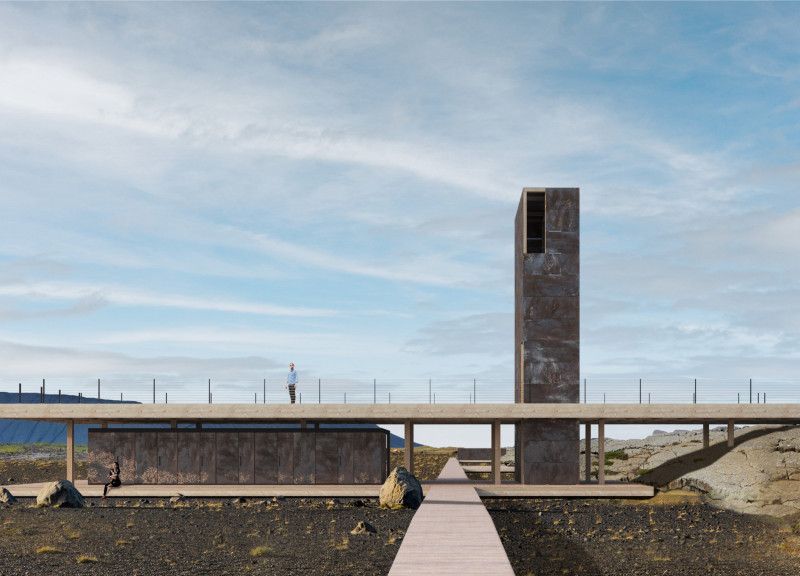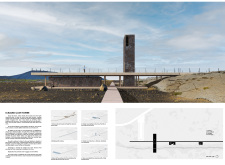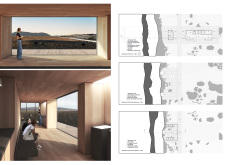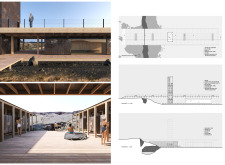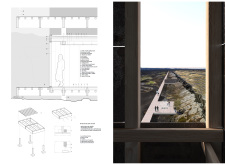5 key facts about this project
The Iceland Cave Tower project embodies a strategic architectural design intended for visitor engagement with the surrounding geological features of Iceland. This project serves as a visitor center that enhances accessibility to nearby caves, providing insights into the natural landscape while maintaining respect for its environment. The design prioritizes functionality, sustainability, and educational opportunities.
The tower is constructed vertically, acting as both an observation point and a landmark, while a series of elevated walkways weave through the landscape, connecting various points of interest. The integration of these elements allows visitors to experience the terrain without disrupting its natural state.
Unique Integration of Natural Elements
A key aspect of the Iceland Cave Tower is its thoughtful integration with the natural surroundings. The vertical structure contrasts with the horizontal boardwalks, creating a dynamic interplay that reflects the geological characteristics of the site. The use of weathered steel in the façades complements the rocky landscape, ensuring that the architecture does not dominate but rather harmonizes with its environment.
The walkways are designed using a modular decking system that promotes ease of maintenance while minimizing site disruption. This design approach fosters a relationship with the landscape, allowing flora and fauna to thrive alongside the constructed elements. Signage and educational opportunities enrich the visitor experience, offering insights into the geological significance of Iceland’s unique features.
Architectural Materials and Functional Design
The architecture incorporates a variety of materials that serve both aesthetic and functional purposes. Weathered steel is the primary material for the tower façade, providing durability against the elements while visually integrating with the surroundings. Treated wood is employed for the elevated walkways and flooring, ensuring comfort for visitors and a warmer tactile experience. Large glass windows allow natural light to illuminate the interior, creating a connection between the users and the extensive views of the landscape.
Concrete underpins the structural elements, ensuring stability and longevity. The layout includes gathering areas for reflection and interaction, as well as strategically positioned observation decks to enhance the visitor experience. The combination of these elements results in a cohesive architectural design that prioritizes visitor engagement while respecting the integrity of the environment.
For further insights into the design and engineering of the Iceland Cave Tower project, readers are encouraged to explore the architectural plans, sections, and designs detailed in the project presentation. Understanding these architectural ideas will provide a comprehensive look at how this project achieves its objectives through a balance of form, function, and environmental harmony.


